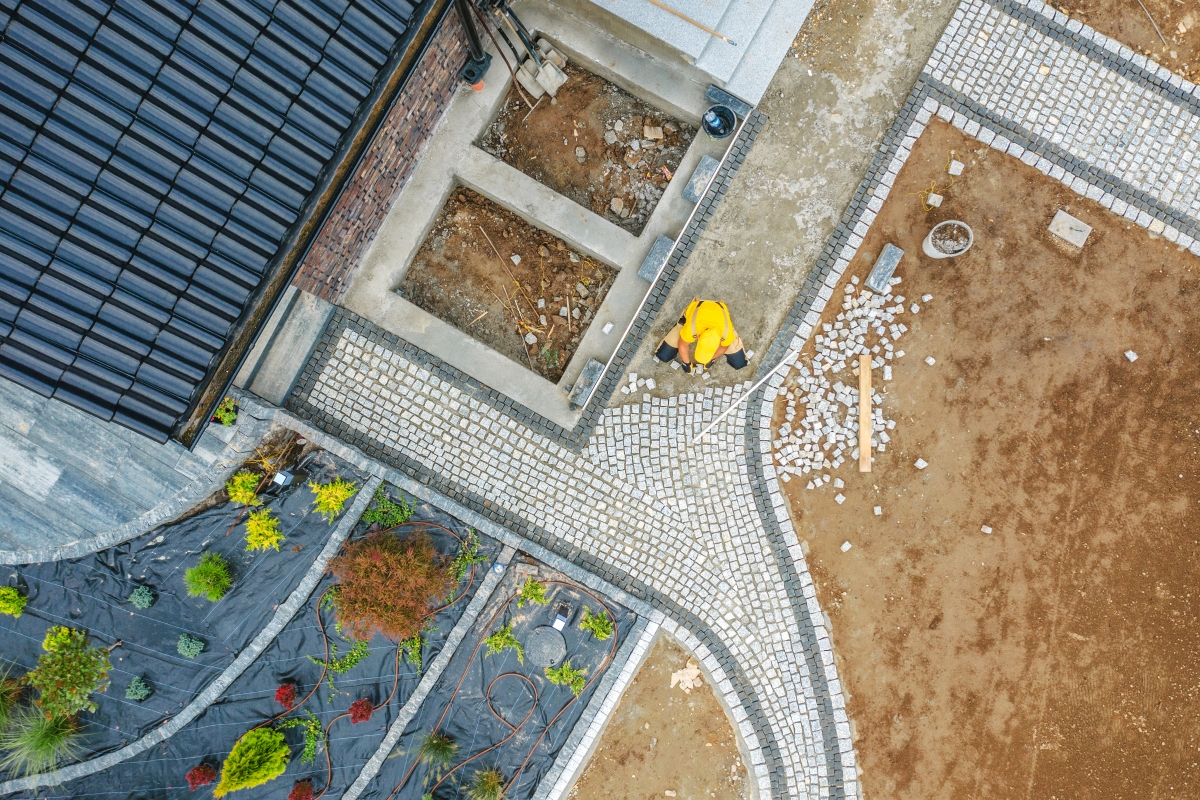Table of contents
- The importance of the air content of the soil
- Free groundwater flow and paving
- What is the importance of an adequate slope?
- Sub-base required for excess clay
- When to wait until spring to lay paving stones?
- Most popular questions and answers
When considering paving your own property or any other area, it is important to check the type and properties of the ground to ensure that paving can be carried out on it. This is important because in some circumstances you will need a layer of sub-base and ballast to stabilise the ground. In order to increase the chance of getting the best possible results, it is worth taking all the relevant considerations into account.
The importance of the air content of the soil
The amount of soil air varies over time, depending, among other things, on the amount of precipitation and the seasonality of weather conditions. When this value is below the so-called critical gas porosity, i.e. when it is less than 0.10, no gas exchange between soil and atmosphere is possible, and acidification forms. One of the simplest measures to improve the respiratory activity of the soil is to loosen it. A hand-held rotary cultivator is sufficient to prepare a small area.
Free groundwater flow and paving
The main sources of moisture in the soil are rainfall, the accumulation of water vapour, but also rising groundwater. Usually, the moisture content by weight or volume in a given amount of soil is determined, but even without exact measurements, it is possible to assess whether a site is excessively wet. Excessive water forms a physical barrier, the air content of the soil is then much lower, and decay processes can be observed. The quickest solution to implement is surface drainage, i.e. creating longitudinal trenches and lining them with fleece to drain excess water. The trench is filled with aggregate, preferably gravel. For significantly higher levels of moisture, underground drainage may be necessary.

What is the importance of an adequate slope?
When it comes to laying paving stones, it is also important to have the correct slope away from the buildings. There are different ways of determining the exact parameters, but usually it is a minimum of 2-3% per running metre of driveway or car park, which in practice means that over a length of 100 metres the difference in height between the start and end of the paving should be at least 2-3 centimetres. For pavements and footways, this is 1-2%. Maintaining such gradients is a way of ensuring that rainwater drains evenly and in a controlled manner, and helps to prevent water from pooling under the paving.
Sub-base required for excess clay
With such a difficult substrate as compacted, heavy clay soil, a sub-base, also known as ballast, is necessary. Clay is only marginally permeable and does not create the conditions for the aforementioned free flow of groundwater and air. Therefore, in order to prevent water stagnation under the paving stones, a suitable substructure is used. For paving loaded with pedestrian traffic, there are two layers: crushed aggregate, followed by a sub-base of grit and cement-sand mix. When the paving is to be loaded with traffic, the sub-base should be even more solid, in which case an additional 10-15 centimetres of mechanically stabilised crushed aggregate, for example, is laid between the two layers above.
When to wait until spring to lay paving stones?
Effective paving in winter can only be talked about when the ground is not frozen and the air temperature does not drop below -5 degrees Celsius. The ground should be sufficiently soft and dry, without the effects of intense snowmelt. However, the manufacturer's guidelines and the warranty provisions for the type of material should always be regarded as the main determinant. When sourcing ABW Superbruk you will receive all the necessary information.
Most popular questions and answers
What are the main factors contributing to paving failure?
The main factors are inadequate air content in the soil, excess moisture in the ground, lack of adequate ground slope, soil that is too compact (e.g. clay) and unsuitable weather conditions.
What is the significance of the air content of the soil?
Too little air in the soil causes acidification, which can make it difficult to lay paving stones properly. Loosening the soil can improve its respiratory activity.
How to deal with excess moisture in the ground?
Excess moisture can be controlled by surface or underground drainage, allowing water to drain away and preventing septic processes.
Why is an adequate slope of the land important?
A suitable slope in the area ensures controlled drainage of rainwater, preventing it from collecting under the paving and increasing the durability of the surface.
When is the best time to lay paving stones?
It is best to lay paving stones in conditions where the temperature does not fall below -5°C and the ground is dry and not frozen. It is recommended to follow the manufacturer's guidelines and guarantee conditions.